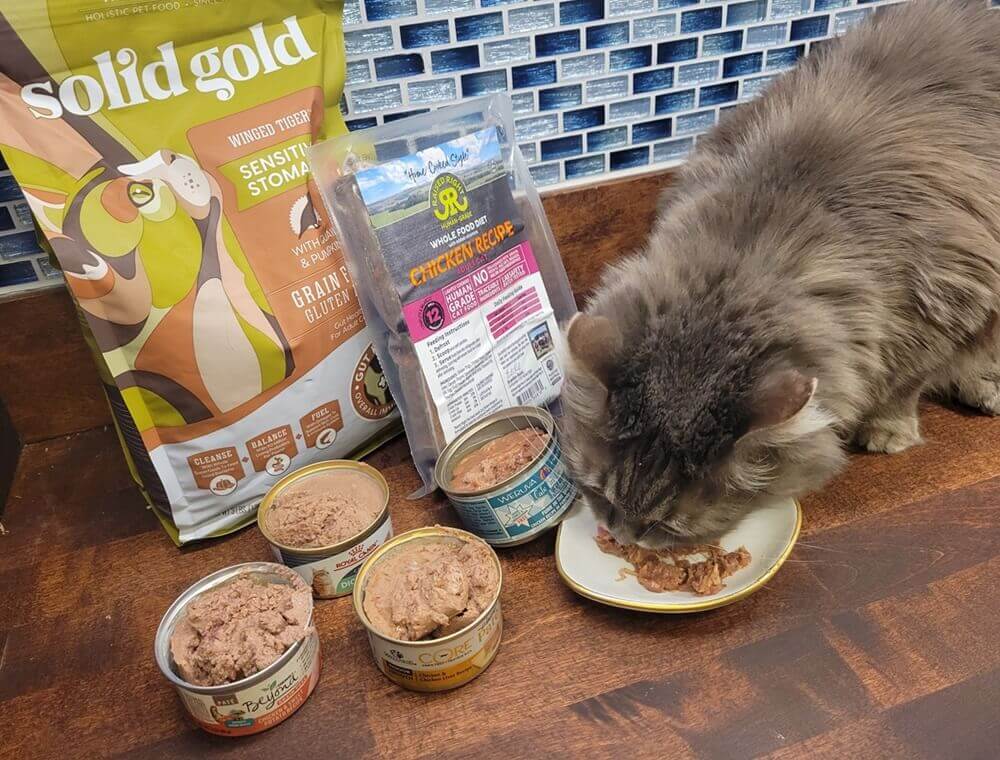
Kate Barrington / Cats.com
After studying how much fiber cats need, identifying appropriate fiber sources for cats, and researching the high-fiber cat food market, we recommend Weruva Cats in the Kitchen Funk in the Trunk Chicken in Pumpkin Consomme as the best high-fiber cat food on the market.
“Incorporating the right amount of dietary fiber into your cat’s diet can offer numerous health benefits,” said Emma Passman, a commercial pet nutritionist based in the United Kingdom. “Fiber aids in regulating the digestive system, helping to prevent both constipation and diarrhea. It can also assist in weight management by promoting a sense of fullness. Additionally, certain types of fiber support the growth of beneficial gut bacteria, contributing to overall gastrointestinal health.”
Most high-fiber foods—think those marketed for indoor cats and hairball control—are bulked up with fiber and other plant ingredients your cat doesn’t need. Too much fiber and too much plant matter can give your cat a smelly litter box and a troubled tummy. That’s the opposite of what you want.
“Because cats are obligate carnivores, fiber must be balanced correctly to avoid displacing essential animal proteins and nutrients,” Passman said. “In the wild, cats can obtain fiber naturally from digested plant matter found in the stomachs of their prey. Choosing the right fiber sources ensures digestive support without compromising your cat’s natural dietary needs.”
The best high-fiber cat food supports your cat’s need for a carnivorous diet and provides just enough fiber to keep their gut healthy without weighing them down.
At a Glance: Best High-Fiber Cat Food to Buy




Want a quick look at the products reviewed in this article? In the comparison table below, we’ve highlighted some of the most important features of each product. You’ll find more detailed information about each product later in the article.
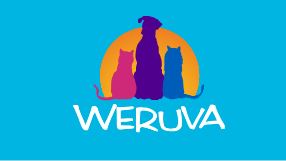
Weruva Cats in the Kitchen Funk in the Trunk
- Popular among cats with digestive issues
- Higher fiber content than most wet foods
- Low carbohydrate content
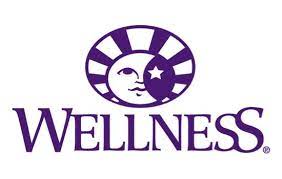
Wellness CORE Grain-Free Indoor Chicken & Chicken Liver Recipe
- Primarily made from animal protein
- Contains a mix of insoluble and soluble fiber, including prebiotic fiber
- Free of artificial colors, flavors, and preservatives
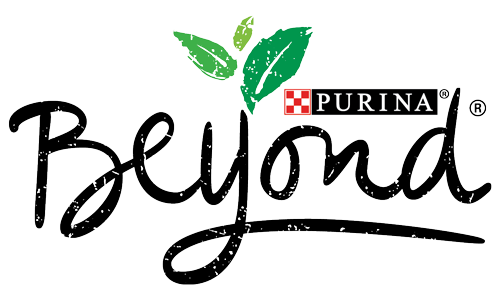
Purina Beyond Indoor Grain-Free Chicken & Sweet Potato Recipe
- Rich in animal-sourced protein
- Free of artificial colors, flavors, and preservatives
- A relatively economical buy

Raised Right Chicken & Pumpkin
- Made with a single source of animal protein
- Pumpkin provides supplemental fiber
- Very low in carbohydrates

Solid Gold Winged Tiger
- Formulated to support digestive health
- Multiple animal sources of protein and fat
- Supplemented with probiotics
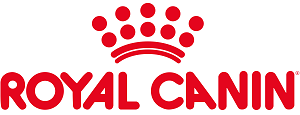
Royal Canin Gastrointestinal Veterinary Diet
- Primarily made from animal protein sources
- Contains prebiotic fiber to support digestive health
- Made with fish oil as a source of omega-3 fatty acids
Why Trust Cats.com
Before selecting products to test, I performed in-depth research and consulted veterinary experts to determine what role fiber plays in feline digestion. Using that information, I selected products and tested them at home with my two cats, Wessie and Forest.
In addition to considering fiber content, I selected cat foods with essential qualities like plenty of species-appropriate animal protein, high moisture content, and minimal carbohydrate matter. They’re made with safe, high-quality ingredients and are created by reputable companies. Some are formulated with digestive health in mind, offering additional support for a smooth move through the digestive system.
On top of testing these products, I read customer reviews to assess their overall customer satisfaction. I also researched the brands to determine their trustworthiness and history of safe, quality manufacturing.
Top 6 High-Fiber Cat Foods
The best high-fiber cat food acknowledges your cat’s carnivorous biology and provides just enough fiber to keep their gut healthy without weighing them down. We’ve chosen Weruva Cats in the Kitchen Funk in the Trunk for its meat-centric formula and easy digestibility. But it’s not the ideal choice for every cat.
If your cat requires high-fiber cat food for therapeutic reasons, follow your veterinarian’s dietary advice. Otherwise, one of the recommendations below might be a good fit. We’ve categorized them by food type, price, and other key considerations to help you narrow down the options.
Best High Fiber Cat Food: Comparison Table
| Product Name | Weruva Cats in the Kitchen Funk in the Trunk | Wellness CORE Grain-Free Indoor Chicken & Chicken Liver Recipe | Purina Beyond Indoor Grain-Free Chicken & Sweet Potato Recipe | Raised Right Chicken & Pumpkin | Solid Gold Winged Tiger | Royal Canin Gastrointestinal Veterinary Diet |
| Primary Protein | Chicken | Chicken | Chicken | Chicken | Quail | Chicken |
| Guaranteed Protein (%) | 10 | 11 | 7 | 20 | 30 | 6.5 |
| Ash (%) | 0.8 | 2.77 | 3.2 | 2 | 7 | 1.6 |
| Calcium (%) | N/A | 0.5 | 0.54 | 1.64 | 1.1 | N/A |
| Phosphorus (%) | 0.14 | 0.48 | 0.43 | 1.44 | 1.4 | 0.2 |
| Calories Per Ounce | 17 | 25 | 32 | 52 | 103 | 20 |
| Cost Per Day | $4.78 per day | $5.41 per day | $2.47 per day | $3.05 per day | $0.94 per day | $8.58 per day |
Things to Consider When Buying High-Fiber Cat Food
Cats are carnivores who live on flesh, fat, and bones. The natural feline diet doesn’t involve cellulose powder, dried tomato pomace, or flaxseed. In contrast to the fiber fermentation machines that are herbivores, cats have short digestive tracts and their bodies don’t spend much time fermenting what they eat.
But they do need a little fiber. When cats consume prey in the wild, they ingest all sorts of indigestible matter—hair, claws, teeth, and connective tissue. Though it’s not fiber in the traditional sense, this indigestible stuff ferments in a cat’s colon and aids digestion. Since most people are unable or unwilling to add back this indigestible animal matter, plant fiber works instead.
Here are some things to consider when shopping for high-fiber cat food.
There Are Two Types of Fiber
Both soluble and insoluble fiber help to promote healthy digestion. Soluble fiber—derived from plant pectin and gums—can help regulate blood sugar, which may be a benefit for diabetic cats. Insoluble fiber or cellulose draws water into the stool, making it easier to pass.
Both types of fiber feed good bacteria in the gut, working together to promote regular digestion. A little bit of fiber is essential to keep your cat’s gut happy and healthy. But while a pinch of fiber is a friend for your cat’s GI tract, there’s no need to fill your cat up with piles of fiber.
Don’t Assume More Fiber is the Solution
On top of the fact that most cat food has more fiber than cats need, cat food companies market fiber as a solution to problems that it either isn’t the best solution to or simply can’t solve. For example, although fiber helps promote fullness, your overweight cat may not need a high-fiber diet to stay satisfied and lose weight.
Neither does your hairball-prone cat need more fiber to sweep hair through their digestive tract. Fiber is not a broom and your cat doesn’t need to be swept like a kitchen floor. It’s normal for cats to eat hair, whether it’s their prey’s hair or their own. That hair moves through the GI tract and comes out in the stool. Frequent hairball hacking is indicative of deeper digestive problems, not a fiber deficiency.
Excessive Fiber Intake Could Cause Problems
Too much fiber could inhibit the secretion of pancreatic enzymes that digest protein, decreasing nutrient absorption and, ultimately, making your cat less healthy. Elisa Katz, DVM says that she’s seen this problem “in many cats fed a commercial prescription diet known to be high in fiber. Their coats become dry and flaky and their stools become huge.”
If, after switching your cat to one of the above foods or something similar, your cat is still having digestive issues, more fiber isn’t the answer. There are likely deeper issues at play.
Speak with your veterinarian if you’re thinking about switching your cat to a high-fiber food. Your vet will consider your cat’s overall health and current diet to determine whether a high-fiber food might be a good fit.
Frequently Asked Questions
How much fiber do cats need?
Cats don’t have specific nutritional requirements for fiber. A wild whole-prey diet consists of indigestible matter which, in a commercial cat food diet, is generally replaced by plant-based fibers. Dietary fiber requirements may vary depending on your cat’s diet health status.
Do indoor cats need more fiber?
No. In fact, most normal dry cat foods—not even those marketed as high-fiber or indoor foods—have more fiber than a cat’s natural diet would ever include. A cat’s natural diet of fresh, whole rodents would be about 0.55% fiber. Compare that to the 4% fiber content of a standard dry food or the 9-10% fiber content of the typical indoor cat food.
How do I add fiber to my cat’s food?
Cats with certain health conditions may benefit from a temporary increase in fiber intake. If your veterinarian recommends it, one of the simplest methods is to add small amounts of unsweetened canned pumpkin puree to your cat’s normal food.
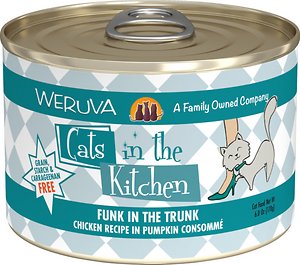
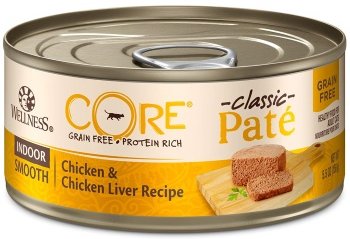
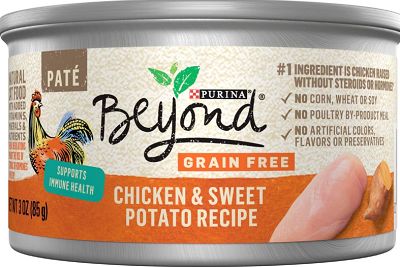
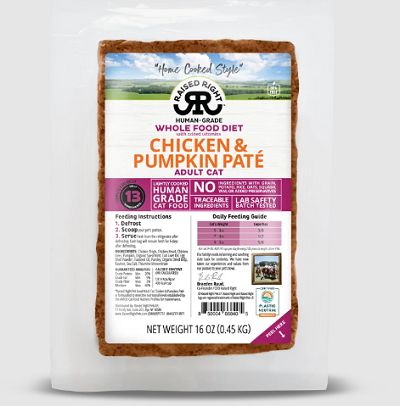
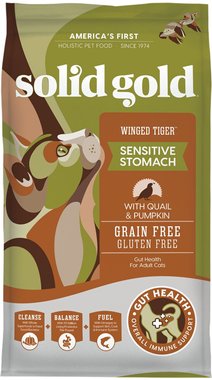
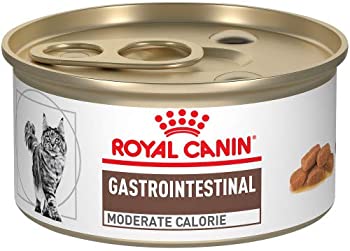
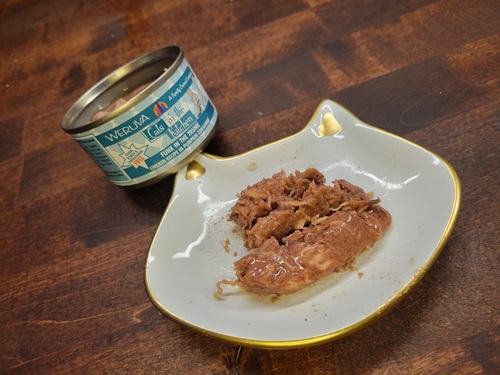

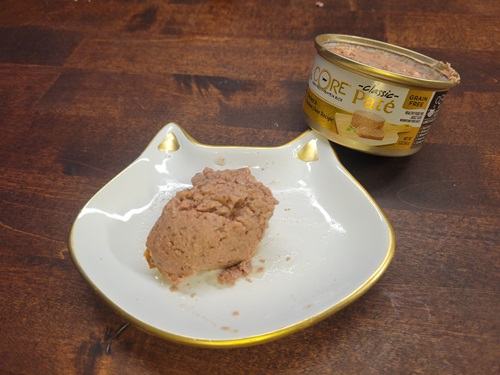
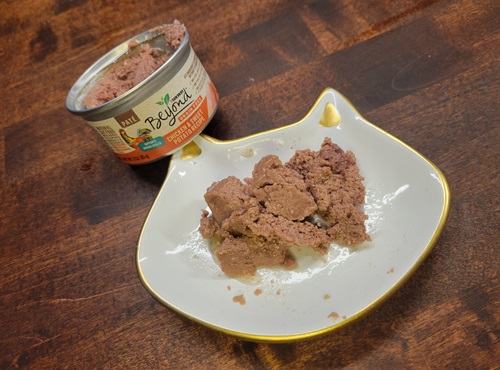
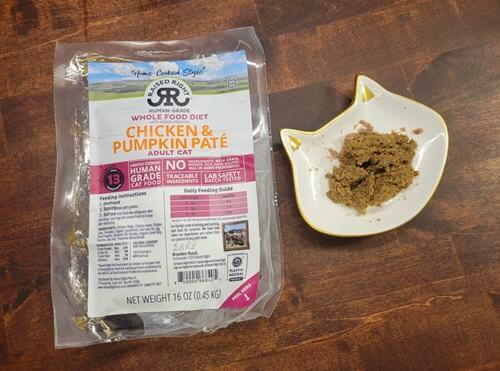
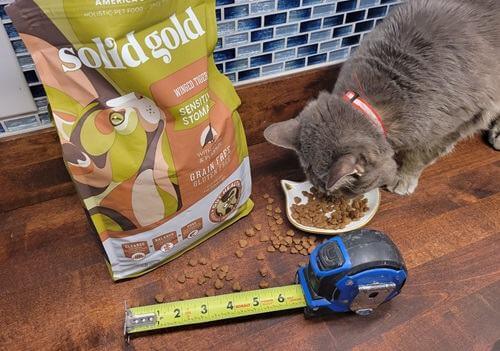
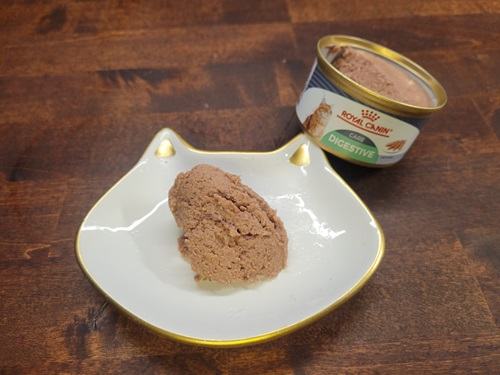
I suppose “best” is subjective, but the recommended Solid Gold dry food has 3% fiber. I have found 11 dry cat foods with fiber ranging from 8% to 10.8% on Amazon and Chewy.
This site and all the cat food reviews have been very helpful. I particularly like how you compare them to their diet in the wild . Do you have some specific foods to recommend for a cat that has hypercalcemia? She is on the prescription Royal Canaan satiety support; but I like to mix it with other wet foods to make it more palatable. She is a picky eater. A pate might be best as she tends to lick the gravy from her food rather than eat it.
Also I understand that a wet food diet is preferable for this condition but there are other cats in the household so there is dry food down all the time. Is there a particular dry food that is better for hypercalcemia? The only thing I know to look for high fiber. What else is important to look for for hypercalcemia? Thank you so much
Hi Valerie, feeding a cat with hypercalcemia can be complex. For one, you should talk with your vet to determine the cause of his hypercalcemia. Diet should, firstly, address that underlying cause. Secondly, good dietary options are generally high in protein with low carbohydrate content and no dl-methionine, phosphoric acid, or ammonium chloride (to avoid acidification). We also try to avoid heavy sources of vitamin D like organ meats and fish oil. Some choose to achieve this combination with a homemade diet, and you can also find some commercial diets that come close to addressing those needs. Examples include certain diets formulated to reduce calcium oxalate stone formation, like Royal Canin Urinary SO, Purina UR Urinary St/Ox, Iams Urinary-O Plus Moderate pH/O, and Hill’s c/d. Kidney diets like Purina NF Kidney Function, Royal Canin Renal LP Modified, Iams Renal Plus, and Hill’s k/d may also be able to help, but you’ll need to get your vet’s approval. I’d recommend talking with your veterinarian to get their advice on the matter.
Thanks so much . I was just at my vet and I had forgotten an important component – an appetite stimulant Mirataz. I have been researching and trying so many foods but that is useless if they won’t eat it! So now she’s eating and I’m awaiting the new lab results. She has done well with Hills w/d but they don’t make it anymore. Vet suggested royal canin satiety which wasn’t helping but maybe will now with the appetite stimulant. Thanks again -Val
Loved finding your website, So much info, I left my vet so overwhelmed on what food to feed my 2 – 13 year old cats, none of which they would eat. Needing food to feed one who is a diabetic and the other one has constipation. I would love to find a food that would serve both needs as they are hard to keep out of each other’s bowls and like to sneak each other’s like their missing something. Any recommendations?
Hi Vicki! We have some information about choosing cat food for diabetic cats (and recommendations) here:
https://cats.com/best-cat-food-diabetic-cats
Unfortunately, diabetic cat foods tend to be low in carbs while cats with constipation can benefit from higher levels of fiber. One thing to try might be adding pumpkin puree to the food. It’s a low-carb source of fiber that will also add a little moisture. Other sources of additional moisture can be beneficial for both cats as well. Supplementing dry food with a high-protein, low-carb wet food is great or just mixing a little bone broth into the food. Bone broth has digestive benefits as well.
Are you paid by these brands? Checking the crude fiber vs dry matter content, some of these actually very LOW fiber content -much lower than other brands, in fact. A very common fiber content is 1%-1.5% crude fiber in 78% moisture foods, which is 6.8% fiber based on dry matter content. Seeing brands on here that are 0.5% to 80%+ moisture brands is misleading. My vet has advised that true high fiber foods are in double-digits in terms of fiber as a percentage of dry matter – prescription high fiber foods are 14%+.
Hey Julius, no! We’re not paid by these brands. As the article mentioned, I chose not to list extremely high-fiber foods, because I found that most of the cats who are given high-fiber foods (like those with constipation and hairballs or overweight cats) don’t benefit as much from a very high-fiber diet as they do a species-appropriate diet with moderate levels of fiber. The products listed here are slightly higher in fiber than other similarly high-protein, carnivore-appropriate foods, and they have other qualities that may support satiety and digestive health as well. I realize that this may make the title seem misleading, but I think this is the most helpful approach. Your vet may have a different opinion on this, and we always recommend bringing these questions to a vet rather than taking our word for it.
You are correct in that the title is misleading which makes this article disappointing. Had I not read the comments I’d still be wondering what I’m missing in that the fiber isn’t that high in these brands. Why not give us what the article promised and let us make decisions for what our cats need right now? Don’t treat readers like we’re children that you have to protect from ourselves.
This is a good point, Liz. I’m still happy with the message of the article, but we’ll keep this in mind for the future.
I did not find the title misleading and absolutely never felt I was being treated as a child. The title stated “ BEST” High Fiber Food as opposed to simply Highest Fiber Food. From my research I agree that these are considered some of the “best” options for increasing fiber while maintaining good protein and other healthy ingredients for cats, just as the article explains. They did state in the article that there ARE higher fiber foods but that there are reasons that those higher fiber foods may not be best for cats. The title fits the article just fine.
This article is really helpful in finding a new diet for my 4 cat household. I did want to note that the ingredient list for the Weruva was incorrect. Thank you!
Lani, thank you so much for making us aware of that! I’ve corrected the ingredient list.